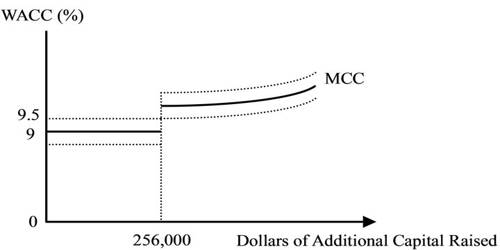Comprehensive Differentiate between WACC and MCC –
The weighted average cost of capital – The weighted average cost of capital (WACC) is the rate that a company is expected to pay on average to all its security holders to finance its assets. The WACC is commonly referred to as the firm’s cost of capital. Importantly, it is dictated by the external market and not by management. The WACC represents the minimum return that a company must earn on an existing asset base to satisfy its creditors, owners, and other providers of capital, or they will invest elsewhere.
Companies raise money from a number of sources: common stock, preferred stock, straight debt, convertible debt, exchangeable debt, warrants, options, pension liabilities, executive stock options, governmental subsidies, and so on. Different securities, which represent different sources of finance, are expected to generate different returns. The WACC is calculated taking into account the relative weights of each component of the capital structure. The more complex the company’s capital structure, the more laborious it is to calculate the WACC.
The marginal cost of capital – The marginal cost of capital is calculated as being the cost of the last dollar of capital raised. When raising extra capital, firms will try to stick to desired capital structure, but once sources are depleted they will have to issue more equity. Since this tends to be higher than other sources of financing, we see an increase in the marginal cost of capital as capital levels increase. Since an investment in capital is logically only a good decision if the return on the capital is greater than its cost, and a negative return is generally undesirable, the marginal cost of capital often becomes a benchmark number in the decision-making process that goes into raising more capital.














